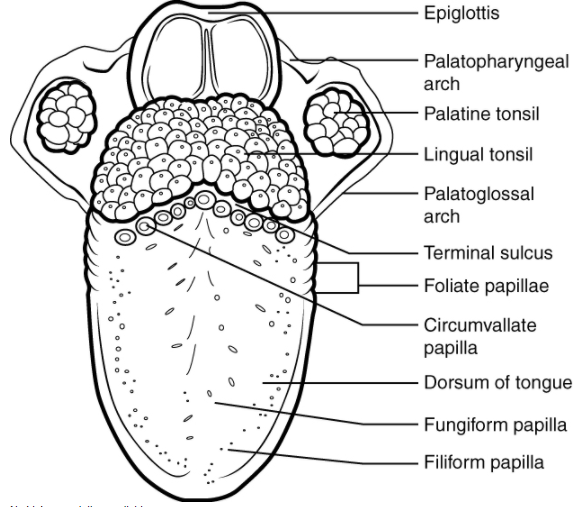
Draw the diagram of lingual frenulum.
Answer
542.1k+ views
Hint: A fold of mucous membrane that is located under the center portion of your tongue is called a lingual frenulum. It tends to limit movement of our tongue.
Complete answer:
The thin strip of tissue which runs vertically from the floor of mouth to the undersurface of our tongue is known as the lingual frenulum. It also helps to stabilize the movements of the tongue. Because of this, it’s important for functions such as eating, speech and swallowing. It tends to limit the movement of our tongue, and it is so short in some people, and it interferes with speaking.
A "V" shaped hump of tissue is present at the base of the frenulum, in the floor of the mouth that houses a series of saliva gland ducts. In front of the attachment of the lingual frenulum, two largest ducts are in the center present and these are called Wharton's Ducts. They empty the sublingual salivary glands and submandibular or submaxillary into a small prominence on either side of the frenulum, the sublingual caruncle. These ducts are quite active in some persons, a considerable amount of saliva may interrupt them while yawning, cleaning the teeth, talking, or eating in a process known as gleeking.

Note: A restrictive lingual frenulum of tongue tie is often seen in children. In approximately three percent of children, the attachment may limit their normal tongue mobility (ankyloglossia) that can lead to difficulties or discomfort while nursing and can also impact speech development.
Complete answer:
The thin strip of tissue which runs vertically from the floor of mouth to the undersurface of our tongue is known as the lingual frenulum. It also helps to stabilize the movements of the tongue. Because of this, it’s important for functions such as eating, speech and swallowing. It tends to limit the movement of our tongue, and it is so short in some people, and it interferes with speaking.
A "V" shaped hump of tissue is present at the base of the frenulum, in the floor of the mouth that houses a series of saliva gland ducts. In front of the attachment of the lingual frenulum, two largest ducts are in the center present and these are called Wharton's Ducts. They empty the sublingual salivary glands and submandibular or submaxillary into a small prominence on either side of the frenulum, the sublingual caruncle. These ducts are quite active in some persons, a considerable amount of saliva may interrupt them while yawning, cleaning the teeth, talking, or eating in a process known as gleeking.

Note: A restrictive lingual frenulum of tongue tie is often seen in children. In approximately three percent of children, the attachment may limit their normal tongue mobility (ankyloglossia) that can lead to difficulties or discomfort while nursing and can also impact speech development.
Recently Updated Pages
Master Class 12 Business Studies: Engaging Questions & Answers for Success

Master Class 12 Economics: Engaging Questions & Answers for Success

Master Class 12 English: Engaging Questions & Answers for Success

Master Class 12 Maths: Engaging Questions & Answers for Success

Master Class 12 Social Science: Engaging Questions & Answers for Success

Master Class 12 Chemistry: Engaging Questions & Answers for Success

Trending doubts
Which animal has three hearts class 11 biology CBSE

1 Quintal is equal to a 110 kg b 10 kg c 100kg d 1000 class 11 physics CBSE

Explain zero factorial class 11 maths CBSE

The camels hump is made of which tissues a Skeletal class 11 biology CBSE

How do I convert ms to kmh Give an example class 11 physics CBSE

The percentage of free SO3 in oleum sample which is class 11 chemistry CBSE




